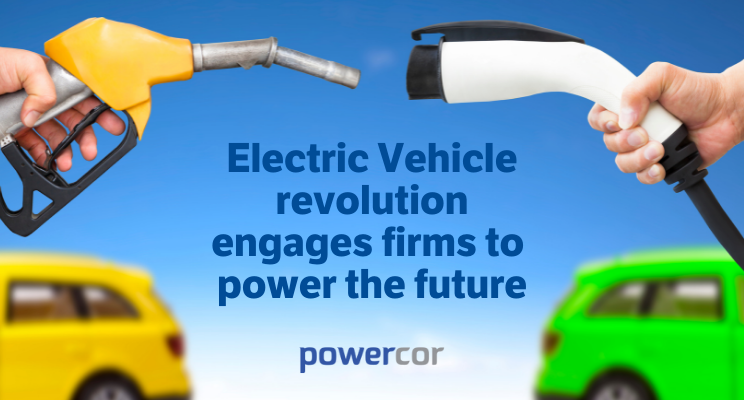Powercor’s Technical Director, Chris Wright, examines how the UK government’s plans for a net zero transport system within the next two decades means firms need to consider how to have the necessary infrastructure in place.
The UK has devised definitive plans to lead the electric vehicle revolution as the government used the COP26 summit to announce a wave of new initiatives.
The government announced that all new heavy goods vehicles in the UK will be zero-emission by 2040. The UK will become the first country in the world to commit to phasing out new, non-zero emission, heavy goods vehicles weighing 26 tonnes and under by 2035. Coupled with the UK’s 2030 phase out of petrol and diesel cars and vans, we will see an end to the sale of all polluting road vehicles within the next two decades.
This comes as research from Bloomberg New Energy Finance found 31% of the global passenger vehicle market is now covered by vehicle manufacturer commitments to end sales of fossil-fuel-powered vehicles, up from a near-zero share of the market at the start of 2021.
Global sales of zero emission vehicles (ZEVs) have grown dramatically since 2019 from 2.1 million to 5.3 million ZEVs and are forecast to be 70% of all new car sales in 2040. This projection has doubled in the last five years
The government has also unveiled a new design for electric vehicle charge points. It has been said the design will provide greater choice to industry and local government, as well as raise awareness and generate excitement around electric vehicles.
The UK has pledged to build “one of the most convenient, affordable and reliable charging networks in the world”.
UK Transport Secretary Grant Shapps said: “To support the transition to EVs, it’s integral that we have the infrastructure to support it. My vision is for the UK to have one of the best EV infrastructure networks in the world, with excellent British design at its heart.”
It comes after the Government pledged around £620 million for targeted electric vehicle grants and infrastructure.
The result is a huge demand in the requirements for EV charging points. Concerns remain that access to public charging points will remain under pressure in the next decade as the use of EVs outstrips the publicly available charging points and batteries become more powerful.
As such many firms are looking to install charge points at their workplaces to enable staff to recharge the vehicles without the need to access public charge points.
However, the size and capacity of the batteries used in vehicles requires far more than simply the installation of the charge points themselves.
Firms are likely to want to install several charge points to allow vehicles to be charged simultaneously. While multiple points are preferred, firms will need to understand how this will affect their current electricity supply and, more importantly, the current capacity.
Each unit can demand in excess of 16 amps to operate. As such any multiple of charges will place additional stress on a company’s infrastructure.
The first task for any firm considering the installation of charge points is a full understanding of the capacity that can be put through their current electrical system. It may require infrastructure enhancements to increase the levels of power that can be accessed. Once a sufficient power supply is established, technology can play its part and there is the growing use of diversity systems that will limit the power usage to the available capacity.
Such systems have the ability to effectively manage the distribution of the available power. For example if the capacity is 100 amps, the system will allow a full charge if a single charging point is in operation. If more charging points come online the available capacity will be equally shared across those charge points in use to ensure that all vehicles are being charged, albeit at a less optimal rate.
The countdown has already begun to the UK’s move to a net zero transport system and firms need to ensure they have the capabilities and infrastructure to ensure their operation has the power to allow their staff to operate.






